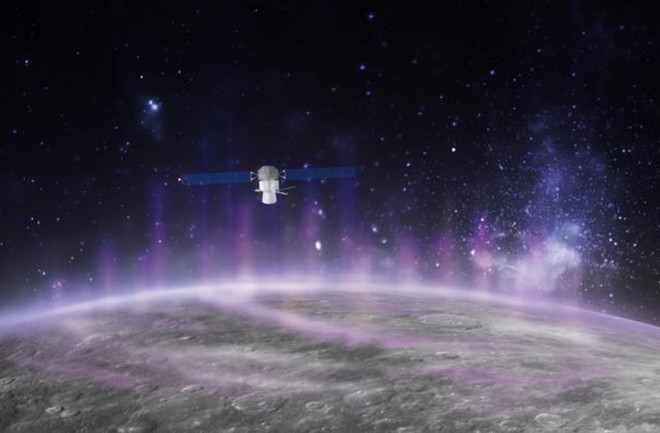Rewrite of the text:
Earth experiences stunning aurorae that are vibrant in neon colors. These mesmerizing lights occur when charged particles from the sun, known as the solar wind, collide with the planet’s outer atmosphere called the ionosphere. Fortunately, the Earth’s magnetic field captures and directs these particles towards the poles, resulting in magnificent cloud-like formations and ribbons of light dancing across the sky.
A recent research conducted by the Europlanet Society has shed light on another peculiar aurora phenomenon. This unique aurora can be observed surrounding the planet Mercury and is characterized by the presence of X-rays. Surprisingly, this aurora originates from the planet’s surface rather than its upper atmosphere, as explained by a new scientific paper.
Physicist Sae Aizawa, associated with the Japanese Aerospace Exploration Agency, stated, “For the first time, we have witnessed how electrons are accelerated in Mercury’s magnetosphere and precipitated onto the planet’s surface.” This breakthrough was made possible through the collaboration of the European Space Agency and the Japanese Aerospace Exploration Agency in the BepiColombo space mission.
The BepiColombo mission consists of two probes, the Mercury Planetary Orbiter and the Mercury Magnetospheric Orbiter, funded respectively by the European and Japanese space agencies. These probes traveled together to Mercury and are expected to remain connected for a total of seven years until they achieve their final orbit in 2025. To reach their destination, the spacecraft followed a circuitous route, passing by Earth and Venus before eventually reaching Mercury’s vicinity.
During the upcoming years, BepiColombo will perform multiple flybys to adjust its trajectory and prepare for final orbit. In 2021, during the first flyby, the probes approached within 125 miles of Mercury. By employing plasma instruments, they were able to detect various types of charged particles in the solar wind and also measure the planet’s relatively small magnetosphere, including the magnetopause and the bow shock regions where the planet’s magnetic field interacts with the solar wind. The data collected during this mission revealed that the magnetosphere was in an abnormally compacted state due to the strength of the solar wind.
Researchers subsequently concluded that charged particles ascend from the dark side of Mercury and descend onto the dawn side, resulting in the release of X-rays and the creation of the auroral glow. Unlike Earth, Mercury’s magnetosphere lacks enough strength to shield the planet from the solar wind. Nonetheless, this discovery has verified that the mechanism responsible for generating aurorae is consistent across the entire solar system. Sae Aizawa affirmed, “While Mercury’s magnetosphere differs in size, structure, and dynamics from Earth’s, we have now confirmed that the aurora generation mechanism is universal.”
